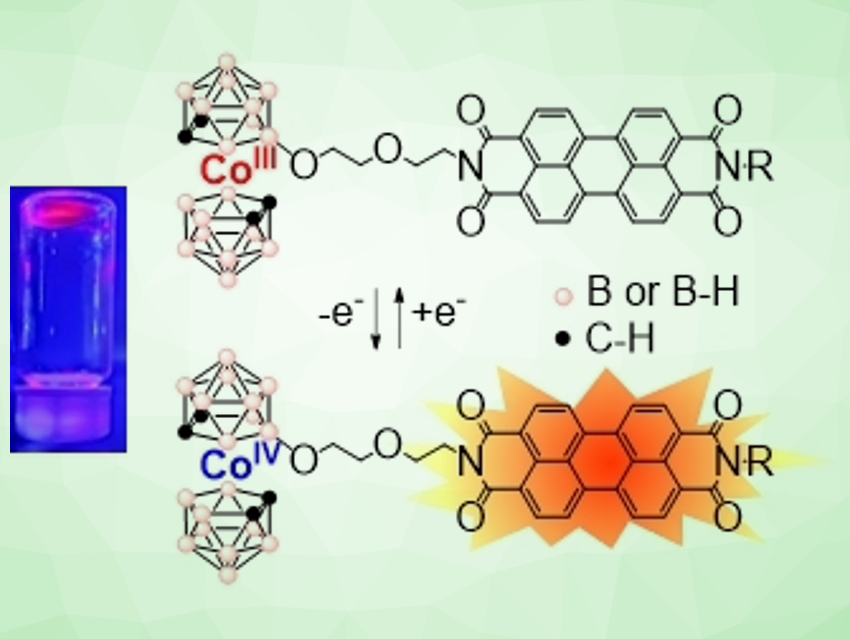Switchable luminescent molecules and materials that can respond to redox stimuli could have a variety of applications in biosciences and materials science, e.g., in imaging or display technology. Current strategies to prepare such materials rely on tethering emitters to redox-active quenching units—often metal complexes with their rich electrochemistry. However, only a limited number of examples have been reported to date, mainly based on metallocenes.
In an alternative approach, Rosario Núñez, Institut de Ciència de Materials de Barcelona (ICMAB-CSIC), Spain, Jordi Hernando, Universitat Autònoma de Barcelona (UAB), Spain, and colleagues have used metallacarboranes (complexes with boron cluster-based ligands) as redox-responsive groups in smart luminescent systems (pictured). In particular, they combined a perylendiimide dye and a cobaltabisdicarbollide anion, which were linked through a short oligooxyethylene linker. The resulting compounds can switch their fluorescence on and off upon oxidation and reduction of the cobalt center (pictured above on the right).
These compounds have several advantages over previous systems based on metallocenes: larger emission modulation amplitudes, higher versatility, improved solubility in polar solvents. and greater self-assembly capacity. The team used the latter for the preparation of luminescent supramolecular gels (pictured above on the left). Based on this work, the use of metallacarboranes could allow the preparation of new, functional, redox-responsive emissive molecules and materials.
- Reversibly Switchable Fluorescent Molecular Systems Based on Metallacarborane–Perylenediimide Conjugates,
Laura Parejo, Mahdi Chaari, Sara Santiago, Gonzalo Guirado, Francesc Teixidor, Rosario Núñez, Jordi Hernando,
Chem. Eur. J. 2020.
https://doi.org/10.1002/chem.202002419




